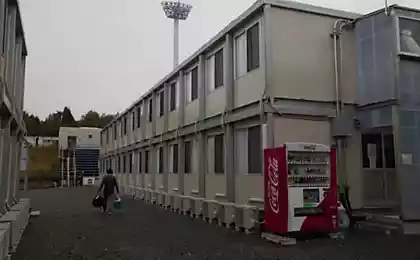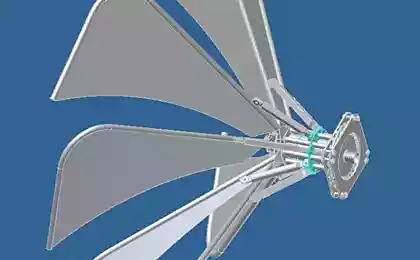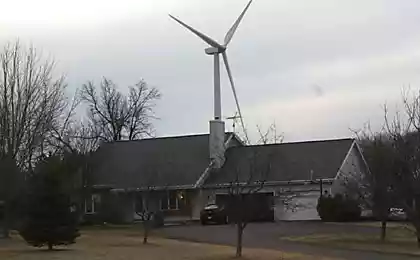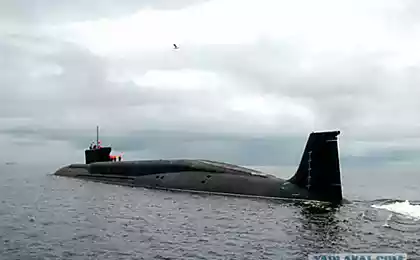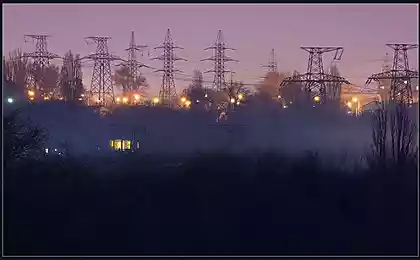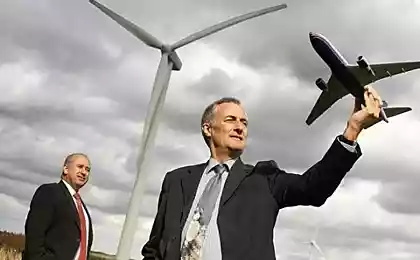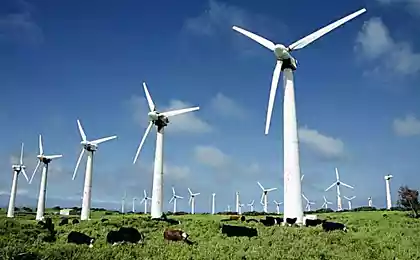222
What are wind farms?
Wind power is one of the “divisions” of alternative energy, implying the development of means and methods aimed at converting wind energy into electrical, heat, or mechanical energy.
The advantages of wind energy are the same as those of all other alternative energy sectors. These include low costs for the maintenance of special devices, renewability, environmental friendliness. As for the disadvantages, they can include, for example, noise. A wind turbine and a residential building must be separated by at least three hundred meters. As for the appearance of the devices, everything is subjective, and the imperfection of the design is easily correctable. At the moment, professional designers are responsible for the proper design in most large companies.
You can not count to such great disadvantages and occupying a significant area, since the foundation of the windmill, as a rule, is completely hidden underground. Thus, the use of land for planting purposes can be up to the base of the structure.
Wind energy is “extracted” from nature with the help of wind power plants. Vertical axial and horizontal axial engines are the 2 main designs of wind turbines. Their efficiency is approximately the same, but more popular horizontal axial units. The range of possible capacities of a wind turbine is extensive – it varies from hundreds of watts to several MW.
A wind farm is 2 (or more) wind turbines that convert wind energy into electricity later delivered to consumers.
A wind turbine is a system that includes a wind motor, as well as machines, and systems that make these machines (compressor, pump, etc.) work.
Hybrid wind power plant is a wind power plant plus another energy supplier (solar, photovoltaic collectors, gas turbine engine, engine operating at the expense of gasoline or diesel fuel, hydrogen, capacitive storage of compressed air, etc.), which serve as an additional or spare source of electricity supplied to users.
A wind farm is called a complex of installations that “extract” electricity from the wind. In many cases, they are placed in rows perpendicular to the main wind direction. Developing such a project, specialists necessarily take into account the presence of a road on which you can get to the installations, a system that monitors and monitors, a substation.
Wind power plants on the global market
Alternative energy, and with it, wind energy, can boast of its rapid development. Among the main reasons for this are the current problems of energy security, the increase in the cost of oil, the consciousness of many people who are concerned about climate change on the planet.
The average electricity used from wind farms is 1.5 per cent. In countries where the use of such devices is strongly supported by the government, the share of wind energy is much higher. For example, wind energy accounts for 8 percent of total energy in Germany, ten percent in Spain, and as much as 20 percent in Denmark.
More than 50% of the world’s wind capacity is currently located in Europe. Faster than the rest of the wind power plants acquire Asians, North Americans, Europeans.
According to the scenarios for the development of this branch of alternative energy, which were compiled by scientists, in 2030 the share of wind energy can be five percent, and in 2050 – 6.6 percent. This is in the absence of market incentives and state support. If governments were to push for more wind farms, the figures would be 15.6 percent and 17.7 percent, respectively. And with global energy saving measures, 2030 and 2050 will be marked by such figures as 29.1 and 34.2 percent.
This analysis suggests that wind power can take a stronger position in the electricity supply system if global energy saving measures are implemented.
For example, the Canadian government has set a goal to increase wind power production by fifteen percent by 2015. The EU plans to reach 180,000 MW in 2020. And the national development plan of China contains data according to which this figure should reach 30,000 MW by 2020.
Despite the fact that many countries around the world are actively interested in alternative energy, Russia, on the contrary, produces and supplies to other countries an increasing amount of traditional fuel. The leaders in the Russian fuel and energy balance are oil (18.9 percent) and gas (53 percent). Solid fuel accounts for 18 percent of the total energy consumed.
With the help of alternative energy sources, the Russian Federation receives no more than eight and a half billion kWh of electricity per year. Hydropower plants with a capacity exceeding twenty-five MW are not taken into account. In relation to the total volume, this is less than one percent.
Some time before the financial crisis, Russians began to create a regulatory framework for the development of the wind energy market. So, in 2007, amendments to the Federal Law “On Electricity” were adopted, which became the basis for the development of this industry. As a result, the institutional conditions for the existence of the market began to form, the industry became more attractive in terms of investment.
What does the Russian alternative energy market look like?
One of the main directions of the state policy in the field of increasing energy efficiency was the development of electricity generation due to:
Installations that “extract” energy from sunlight;
installations that “produce” energy through wind;
small hydroelectric power plants with a capacity of 25 MW;
installations using geothermal energy of underground heat sources;
installations using biogas, biomass;
installations using low-potential heat energy of water (including wastewater), air, land.
To achieve the volume of use of devices extracting energy from the wind, by 2020, generating devices (thermal power plants operating at the expense of biomass, geothermal, tidal, wind power plants, small hydropower plants, etc.) will be introduced, the total capacity of which should be 25 GW.
As a result, wind farms in 2020 will have to equal ~ eighty billion kWh.
For Russia, the development of wind energy is very important, since seventy percent of the land of the state with ten percent of the population is located in areas of decentralized electricity supply. At the same time, these regions are potentially favorable for generating electricity due to wind (Taimyr, Yakutia, Chukotka, Kamchatka, Buryatia, Sakhalin, Magadan region, etc.).
New capacities that allow to “extract” energy from the wind appear in Russia rather slowly. For example, in 2005 this figure was 14 MW, in 2006 – 15.5 MW, in 2007 – 16.5 MW. The average rate of growth is eight percent per year. The figure is not very attractive compared to, for example, Spain with its 20 percent, the United States with 30 percent, China with 60 percent.
There are currently ten large wind farms in Russia. Their share is ~90 percent of the total capacity. Also, there is a little more than one and a half thousand small wind turbines, the power range of which is 0.1 – 30 kW.
The vast majority of installations were installed in 2003-2004. While in recent years, the capacity is growing, as a rule, due to the emergence of low-power single energy systems. The increase is equal to 250 wind installations, whose power is 1-5 kW.
Wind energy geography
There are more than fifty participants in the wind energy market, 50% of them are producers. The vast majority manufacture products using their designs, and > 1% produce devices due to the transfer of foreign technologies.
State plans assume rapid rates of further development of wind energy and set themselves rather complex, taking into account the current pace of development, goals.
Source: zeleneet.com
The advantages of wind energy are the same as those of all other alternative energy sectors. These include low costs for the maintenance of special devices, renewability, environmental friendliness. As for the disadvantages, they can include, for example, noise. A wind turbine and a residential building must be separated by at least three hundred meters. As for the appearance of the devices, everything is subjective, and the imperfection of the design is easily correctable. At the moment, professional designers are responsible for the proper design in most large companies.
You can not count to such great disadvantages and occupying a significant area, since the foundation of the windmill, as a rule, is completely hidden underground. Thus, the use of land for planting purposes can be up to the base of the structure.
Wind energy is “extracted” from nature with the help of wind power plants. Vertical axial and horizontal axial engines are the 2 main designs of wind turbines. Their efficiency is approximately the same, but more popular horizontal axial units. The range of possible capacities of a wind turbine is extensive – it varies from hundreds of watts to several MW.
A wind farm is 2 (or more) wind turbines that convert wind energy into electricity later delivered to consumers.
A wind turbine is a system that includes a wind motor, as well as machines, and systems that make these machines (compressor, pump, etc.) work.
Hybrid wind power plant is a wind power plant plus another energy supplier (solar, photovoltaic collectors, gas turbine engine, engine operating at the expense of gasoline or diesel fuel, hydrogen, capacitive storage of compressed air, etc.), which serve as an additional or spare source of electricity supplied to users.
A wind farm is called a complex of installations that “extract” electricity from the wind. In many cases, they are placed in rows perpendicular to the main wind direction. Developing such a project, specialists necessarily take into account the presence of a road on which you can get to the installations, a system that monitors and monitors, a substation.
Wind power plants on the global market
Alternative energy, and with it, wind energy, can boast of its rapid development. Among the main reasons for this are the current problems of energy security, the increase in the cost of oil, the consciousness of many people who are concerned about climate change on the planet.
The average electricity used from wind farms is 1.5 per cent. In countries where the use of such devices is strongly supported by the government, the share of wind energy is much higher. For example, wind energy accounts for 8 percent of total energy in Germany, ten percent in Spain, and as much as 20 percent in Denmark.
More than 50% of the world’s wind capacity is currently located in Europe. Faster than the rest of the wind power plants acquire Asians, North Americans, Europeans.
According to the scenarios for the development of this branch of alternative energy, which were compiled by scientists, in 2030 the share of wind energy can be five percent, and in 2050 – 6.6 percent. This is in the absence of market incentives and state support. If governments were to push for more wind farms, the figures would be 15.6 percent and 17.7 percent, respectively. And with global energy saving measures, 2030 and 2050 will be marked by such figures as 29.1 and 34.2 percent.
This analysis suggests that wind power can take a stronger position in the electricity supply system if global energy saving measures are implemented.
For example, the Canadian government has set a goal to increase wind power production by fifteen percent by 2015. The EU plans to reach 180,000 MW in 2020. And the national development plan of China contains data according to which this figure should reach 30,000 MW by 2020.
Despite the fact that many countries around the world are actively interested in alternative energy, Russia, on the contrary, produces and supplies to other countries an increasing amount of traditional fuel. The leaders in the Russian fuel and energy balance are oil (18.9 percent) and gas (53 percent). Solid fuel accounts for 18 percent of the total energy consumed.
With the help of alternative energy sources, the Russian Federation receives no more than eight and a half billion kWh of electricity per year. Hydropower plants with a capacity exceeding twenty-five MW are not taken into account. In relation to the total volume, this is less than one percent.
Some time before the financial crisis, Russians began to create a regulatory framework for the development of the wind energy market. So, in 2007, amendments to the Federal Law “On Electricity” were adopted, which became the basis for the development of this industry. As a result, the institutional conditions for the existence of the market began to form, the industry became more attractive in terms of investment.
What does the Russian alternative energy market look like?
One of the main directions of the state policy in the field of increasing energy efficiency was the development of electricity generation due to:
Installations that “extract” energy from sunlight;
installations that “produce” energy through wind;
small hydroelectric power plants with a capacity of 25 MW;
installations using geothermal energy of underground heat sources;
installations using biogas, biomass;
installations using low-potential heat energy of water (including wastewater), air, land.
To achieve the volume of use of devices extracting energy from the wind, by 2020, generating devices (thermal power plants operating at the expense of biomass, geothermal, tidal, wind power plants, small hydropower plants, etc.) will be introduced, the total capacity of which should be 25 GW.
As a result, wind farms in 2020 will have to equal ~ eighty billion kWh.
For Russia, the development of wind energy is very important, since seventy percent of the land of the state with ten percent of the population is located in areas of decentralized electricity supply. At the same time, these regions are potentially favorable for generating electricity due to wind (Taimyr, Yakutia, Chukotka, Kamchatka, Buryatia, Sakhalin, Magadan region, etc.).
New capacities that allow to “extract” energy from the wind appear in Russia rather slowly. For example, in 2005 this figure was 14 MW, in 2006 – 15.5 MW, in 2007 – 16.5 MW. The average rate of growth is eight percent per year. The figure is not very attractive compared to, for example, Spain with its 20 percent, the United States with 30 percent, China with 60 percent.
There are currently ten large wind farms in Russia. Their share is ~90 percent of the total capacity. Also, there is a little more than one and a half thousand small wind turbines, the power range of which is 0.1 – 30 kW.
The vast majority of installations were installed in 2003-2004. While in recent years, the capacity is growing, as a rule, due to the emergence of low-power single energy systems. The increase is equal to 250 wind installations, whose power is 1-5 kW.
Wind energy geography
There are more than fifty participants in the wind energy market, 50% of them are producers. The vast majority manufacture products using their designs, and > 1% produce devices due to the transfer of foreign technologies.
State plans assume rapid rates of further development of wind energy and set themselves rather complex, taking into account the current pace of development, goals.
Source: zeleneet.com
Digital baby monitor – useful device for caring parents
Ecstasy and methamphetamines cause teen depression

